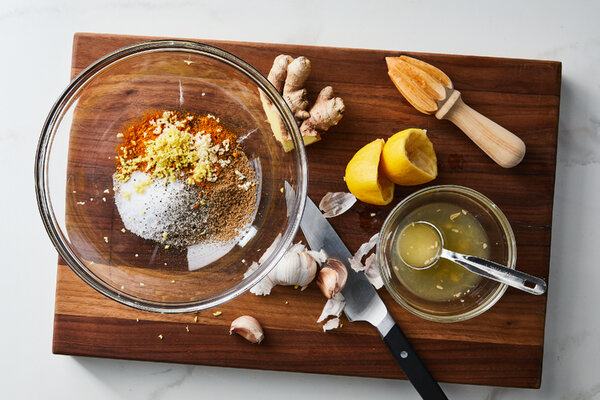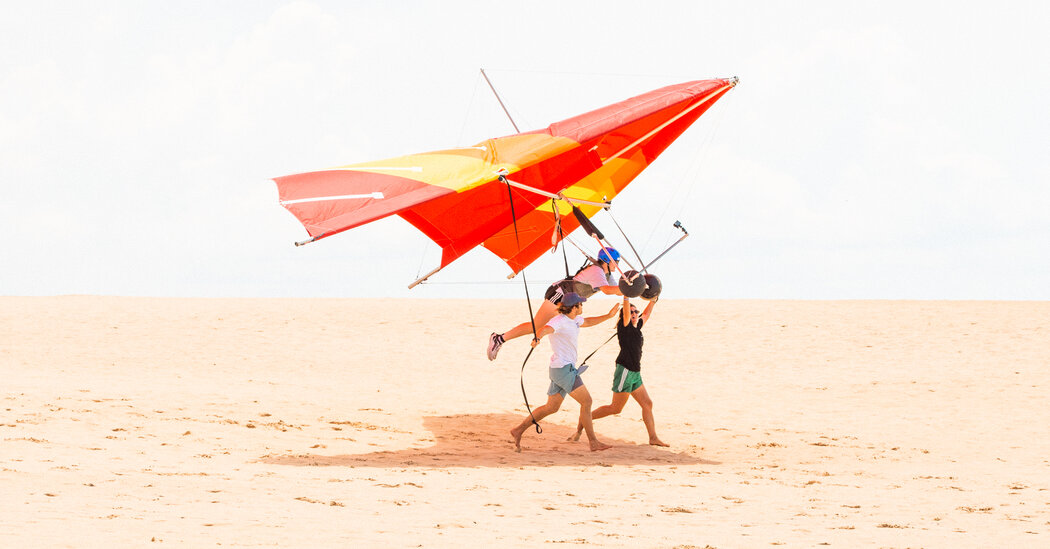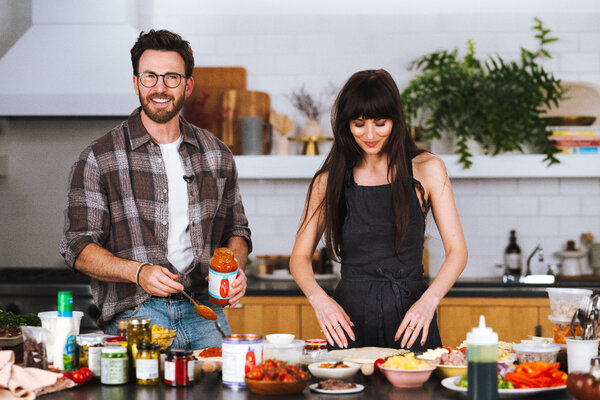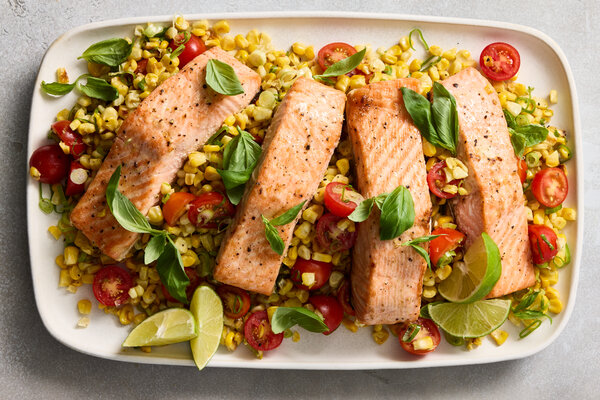This article is part of our Design special section about how food inspires designers to make and do surprising things.
In 2019, the artist Allan Wexler moved from the Manhattan brownstone where he had lived with his wife and collaborator, Ellen, for 40 years. While packing up, he uncovered a black bicycle among the detritus of a decades-long conceptual art and design practice.
At the time, Mr. Wexler, who is now 76, was researching a new version of “The Futurist Cookbook.” Published in 1932 by the Futurist Italian poet and theorist Filippo Tommaso Marinetti, this collection of satirical recipes revolted against traditional Italian cuisine. It took dead aim, for instance, at pasta.
Marinetti’s book consisted of manifestoes and news articles he and others wrote tracking the campaign to revolutionize Italian dining at a time of rapid technological change.
Among its proposed meals was a dinner of black olives, fennel hearts and kumquats with a side of sandpaper, red silk and black velvet that the diner was meant to stroke with one hand while eating. Other sections called for meals in pills and powder form. Suggested locations for proper Futurist consumption included the cockpit of a Ford Trimotor airplane.
In his career, Mr. Wexler has often returned to the objects and rituals of dining. He has connected shirts to a tablecloth for diners so they can tuck themselves literally into a meal, and designed coffee cups connected by tubes, requiring multiple imbibers to act in unison to take a sip. He manipulates artifacts to the point of absurdity, shaking audiences out of their routines and inviting them to consider why they unthinkingly do what they do.
For his own “Futurist Cookbook,” he and a collaborator, the Brooklyn designer Michael Yarinsky, envisioned zany dinner parties held around New York City, which would ultimately be documented and presented in book form.
Last October, the men set up the first dinner, “Tea with Strangers,” at a permanent installation Mr. Wexler designed in 2006 for Hudson River Park. “Two Too Large Tables,” as that work is called, features large, stainless steel tabletops with portions cut away in which sitters wedge themselves into configurations that invite interactions with one another.
The second dinner took place in February, with Mr. Wexler publicly consuming a meal at the Jane Lombard Gallery in SoHo. Seated at his “Light Table” (2021), whose lightbulb-embedded top illuminated the glass tableware sunk into the surface, he helped himself to translucent Vietnamese food prepared by the chef Phoebe Tran. This performance cast light on (and through) assumptions of normality granted to Western conceptions of dining.
And the black bicycle?
It was the centerpiece for the third project in the series, “Bicycle for Picnicking,” staged last month in a grove of willow trees in Highland Park, at the border of Brooklyn and Queens.
On a cloudy Monday afternoon, Mr. Wexler affixed 19 black-painted plywood boxes to the frame of the bicycle, each big enough for a specific component of a picnic, from a corkscrew to a cooler.
Filling the remaining boxes were interpretations of classic American picnic foods — sandwiches, cured meats, crudités, a vanilla cake layered with rhubarb jam and rhubarb buttercream — prepared by Natasha Pickowicz, a pastry chef for the New York City restaurant Altro Paradiso.
The team brought on a model, Aly N’Diaye, to be the picnicker. Dressed all in black, he walked the bike down a hill into a hollow.
Workers cleaning up the mess left by Easter celebrations glanced over as Mr. N’Diaye unpacked the requisite red-checkered picnic blanket, Tupperware containers, utensils and a bottle of wine.
“It’s incredibly fun, the discovery of what’s in each box,” said Ms. Pickowicz, as she watched foods and implements emerge. “The act of eating should be joyful and exploratory.”
Mr. Wexler’s idea was to dismantle the components of an experience — the picnic — like someone taking apart a car engine to figure out how it works.
“It makes us look closely at everyday phenomena,” the artist said as he adjusted the windshield/table that swiveled up and down from the handlebars. “It turns the everyday into theater.”
As he directed the action, Mr. Yarinsky noted, “These are performances of ways people could live, but generally don’t.”
The men compared “Bicycle for Picnicking” to the movable feasts and grand picnics of the Victorian era, but stripped down to conform with the do-it-yourself ethos associated with bicycles and plywood boxes. In opposition to the automation and speed Marinetti prized, the multiple, discrete components were meant to encourage picnickers to slow down and think about the different aspects of a casual and often spontaneous meal.
Today, the future the Futurists dreamed of has arrived, with its synthetic foods and technological processes — though maybe not in the way imagined by Marinetti, who was an early supporter of the fascist Italian leader Benito Mussolini.
World economies have developed around complex refrigeration systems, transportation, genetic modification and a slew of other technologies. People can eat meals on foot or alone in their cars.
“Now it’s possible not to think about food, for a lot of us,” said Nicola Twilley, who recently published “Frostbite: How Refrigeration Changed Our Food, Our Planet, and Ourselves.” “And I think that’s a mistake, because it is our most intimate relationship with the planet, short of breathing.”
Unlike “The Futurist Cookbook,” with its tirades against traditionalism and pasta, Mr. Wexler and Mr. Yarinsky’s project offers many ways to think about dining today. Their alternative vision for the future is not sleek: It’s kind, clever and full of artistic intent.
Next, the pair plan to affix acoustic horns, similar to those found on a gramophone, to a table so that the usually concealed source of sound that creates ambience during a meal becomes visible.
“It’s a new ‘Futurist Cookbook,’ an inversion of the original,” said Mr. Wexler of his tome to come. “We’re talking about democracy, a humanist future.”




